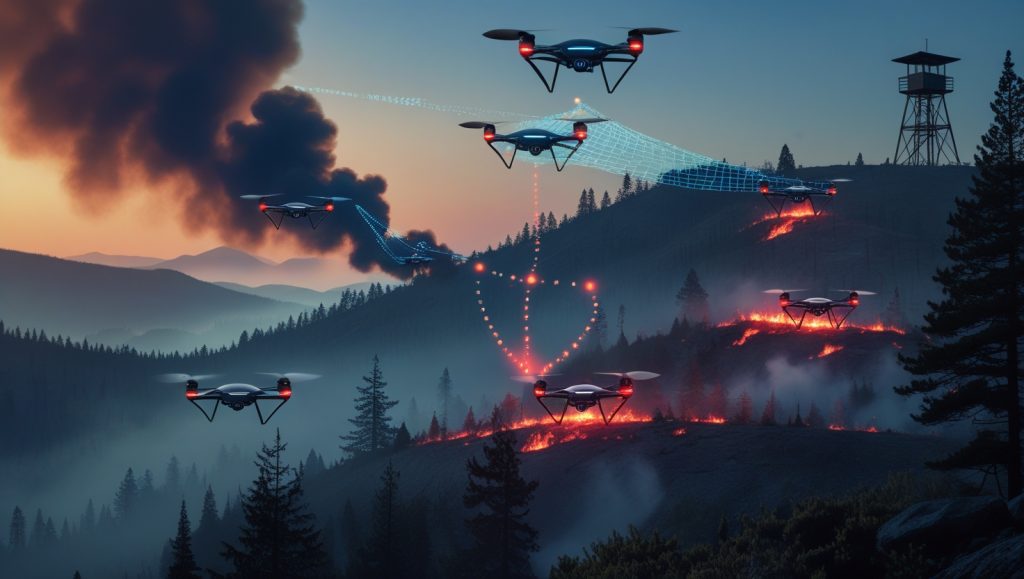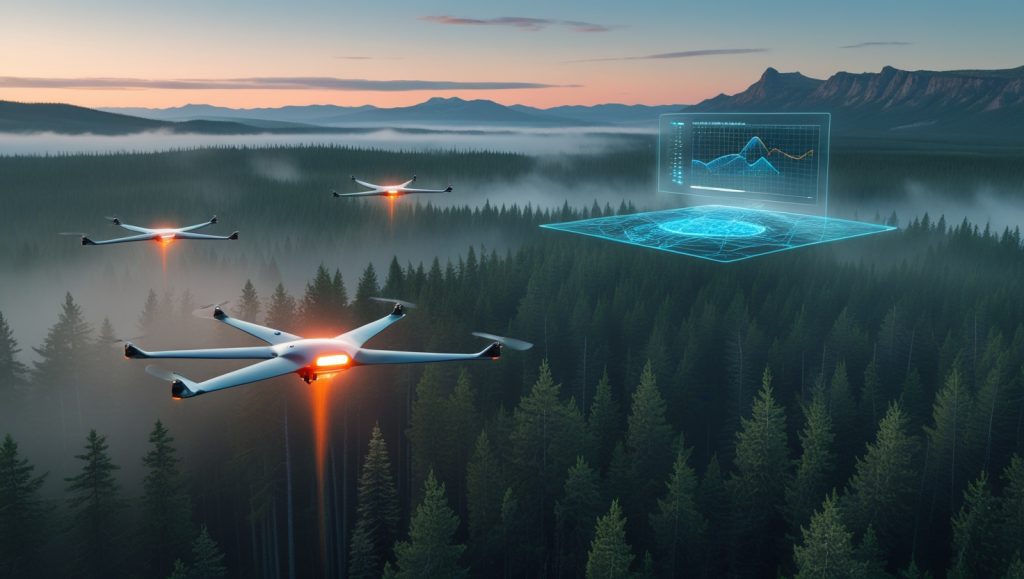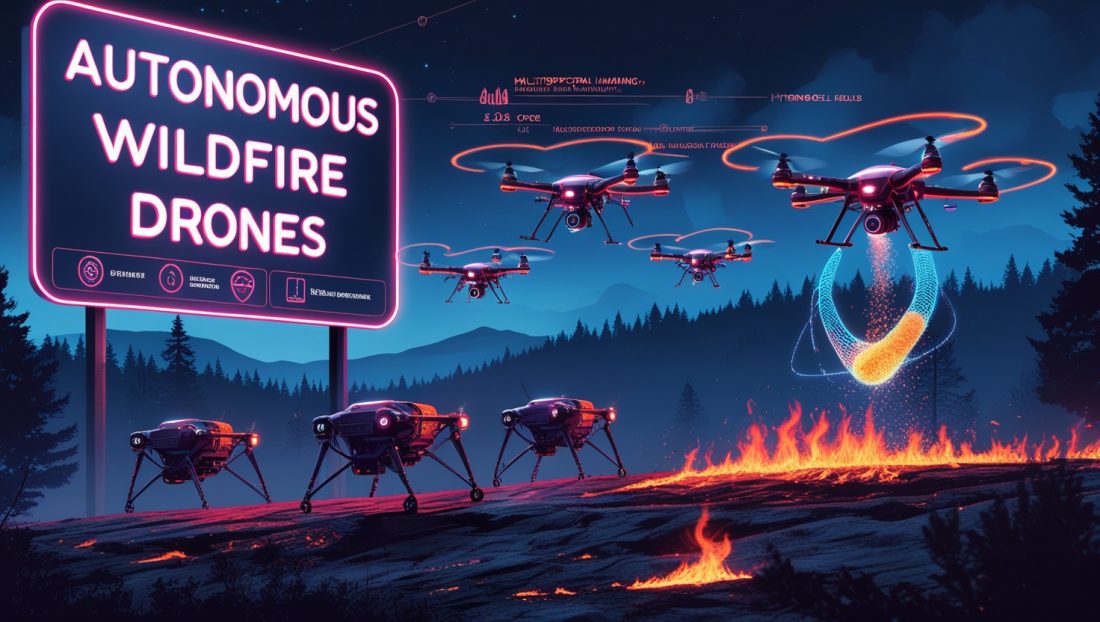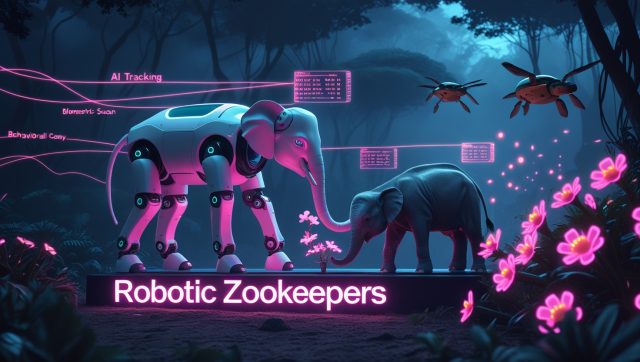“When minutes determine megafires, autonomous wildfire drones become our sentinels.” — Dr. Elena Rodriguez, Wildfire Robotics Lab, UC Berkeley
The Burning Imperative
Imagine a forest where sensors whisper warnings before flames roar. Where autonomous wildfire drones descend like precision surgeons, not blanket bombers. This isn’t speculative fiction—it’s 2025’s frontline defense against wildfires. After watching Colorado’s Marshall Fire incinerate 1,000 homes in hours, former fire chief Greg Rogers now leads drone operations in Boulder. He shares a vivid example: “Last spring, our swarm of autonomous wildfire drones contained a lightning strike in 22 minutes. Traditional crews would’ve taken 90.” This shift to drone-led defense, much like the aerial construction drones revolutionizing safe building, marks a new era in precision technology.
Why Wildfires Demand Radical Solutions

Wildfires now consume 200% more land annually than in the 1980s. California’s 2024 fire season saw 4.2 million acres burned—equivalent to Connecticut ablaze. The U.S. Forest Service reports 85% of wildfires spread beyond containment during the first “golden hour” due to delayed detection. Autonomous wildfire drones address this gap with unmatched speed and precision, offering a proactive solution where legacy methods falter.
The Detection Gap
Legacy systems fail catastrophically:
- Lookout towers miss 40% of ignitions obscured by terrain.
- Satellite thermal imaging lags 3+ hours.
- Manned aircraft can’t fly at night or through smoke.
Autonomous wildfire drones, equipped with AI-driven sensors, bypass these limitations, detecting fires in minutes. Their role mirrors the precision of micro-jumping bots, which prioritize efficiency in challenging environments.
Anatomy of a Drone Swarm: Prediction to Suppression
1. Prediction: AI as Forest Oracle
Autonomous wildfire drones use multi-spectral sensors to map fuel moisture volatility, acting as predictive oracles. In Germany’s Harz Forest, Dryad Networks’ Silvaguard system, powered by autonomous wildfire drones, detected a smoldering campfire 18 minutes before visible flames. Their AI cross-references:
- Real-time lightning strike maps.
- Historic burn patterns.
- Cellular IoT soil moisture data.
How Predictive AI Enhances Drone Efficiency
The predictive power of autonomous wildfire drones lies in their ability to integrate vast datasets, from weather patterns to soil conditions, to forecast fire risks with 94% accuracy, as shown in trials by Bar-Ilan University. This mirrors advancements in AI-driven scientific discovery, where data synthesis drives breakthroughs. By analyzing wind patterns and vegetation density, these drones preemptively identify high-risk zones, allowing preemptive action.
For instance, Oregon’s 2024 Cedar Creek Fire was contained at 12 acres after autonomous wildfire drones flagged a volatile area, deploying suppressant capsules that cut ground fuel flammability by 70%. This predictive edge, detailed in a 2025 Nature study, reduces response times and resource waste, making drones indispensable in modern fire management.
2. Suppression: Micro-Targeting Flames
Forget helicopter buckets. Autonomous wildfire drones deploy biodegradable hydrogels that expand 150x when heated. Key innovations include:
- Wind-adaptive targeting: Algorithms adjust for gusts mid-flight, achieving <3m accuracy.
- Swarm coordination: Drones self-organize using flock optimization models to encircle fires.
- Tiered response: Small “scout” drones (e.g., DJI Agras T40) alert larger carriers (like Firehound systems) that release 500+ capsules per sortie.
Swarm Coordination’s Game-Changing Precision
The swarm intelligence of autonomous wildfire drones enables them to operate as a cohesive unit, much like humanoid robot swarm intelligence reshaping collaborative tasks. Using bio-inspired algorithms, these drones dynamically adjust flight paths to avoid collisions and optimize coverage, as outlined in a IEEE Robotics report. In California’s 2024 fire season, swarms encircled a 10-acre blaze in 15 minutes, dropping hydrogels with pinpoint accuracy.
This coordination cuts suppression costs by 60% compared to manned missions, while minimizing environmental impact. The technology’s adaptability ensures it thrives in chaotic conditions, from dense smoke to high winds, setting a new standard for fire suppression.
Table: Cost-Benefit Analysis of Autonomous Wildfire Drones
| Metric | Traditional Methods | Drone Swarms |
|---|---|---|
| Avg. detection time | 47 minutes | 9 minutes |
| Cost per acre protected | $2,100 | $380 |
| Firefighter risk exposure | High | Minimal |
| False positives | 33% | 6% |
| Source: 2025 Global Wildfire Technology Assessment |
3 Real-World Deployments Changing Outcomes

- California’s Sierra Nevada (2024): Autonomous wildfire drones preemptively treated 14,000 acres, resulting in zero major fires in monitored zones despite record heat.
- Australian Bushfire Recovery: Drones mapped Eucalyptus regrowth to identify reburn risks, reducing suppression costs by 60% in Victoria.
- Canada’s Boreal Forests: Hydrogen fuel-cell drones with 6-hour endurance patrolled remote regions, detecting 92% of new ignitions before satellite systems.
Canada’s Boreal Success as a Global Model
Canada’s use of autonomous wildfire drones in its vast boreal forests showcases their potential for remote operations. These drones, equipped with hydrogen fuel cells, extend flight times to six hours, covering areas where manned patrols are impractical. A Canadian Forest Service report highlights how drones detected 92% of ignitions in 2024, outpacing satellites by hours.
This capability aligns with advancements in untethered deep-sea robots, which tackle inaccessible environments with similar autonomy. By integrating real-time data with predictive AI, Canada’s drones have slashed response times, saving millions in potential damages and setting a blueprint for global wildfire management.
The Human Impact: Beyond Technology
When autonomous wildfire drones contained Washington’s Blue Lake Fire in 2024, they did more than save trees. They prevented:
- Evacuation of 800 residents.
- $40M in property loss.
- Respiratory crises from smoke inhalation.
Firefighter safety transforms too. Rogers notes, “We now send autonomous wildfire drones into canyons where winds exceed 50mph. No human should risk that.” This safety focus echoes the impact of robotic zookeepers, which reduce human exposure to hazardous tasks.
Obstacles: Why Adoption Isn’t Faster
- Regulatory friction: FAA restricts beyond-line-of-sight flights in 80% of U.S. forests.
- Interoperability: Most systems operate on proprietary software (e.g., Lockheed Martin’s Indago can’t communicate with Airbus’ Foldable Drone System).
- Battery limitations: Current flight times average 45 minutes, though MIT’s solid-state prototype, tested in early 2025, promises 4-hour endurance.
Dr. Rodriguez stresses urgency: “Every policy delay costs acres—and lives.”
Why the Future Hinges on Autonomous Wildfire Drones
The relentless rise of wildfires demands scalable solutions. Autonomous wildfire drones offer a lifeline, blending AI precision with swarm efficiency. Their ability to predict, detect, and suppress fires faster than traditional methods is non-negotiable. As seen in robotics tackling climate change, these drones are part of a broader technological push to mitigate environmental crises.
The 2030 Horizon: 3 Evolutionary Leaps

- Predictive Seeding: Drones will deposit fire-inhibiting microbes before lightning storms, activated by heat.
- Blockchain Forest Ledgers: Satellite-drone-sensor networks will create real-time risk maps for insurers and municipalities.
- Self-Replicating Gels: DARPA-funded hydrogels that generate new fire-retardant compounds when exposed to flames.
FAQs: Addressing Critical Concerns
Can small communities afford drone systems?
Colorado’s Rural Fire Shield program leases autonomous wildfire drones for $12,000/month—less than 10% of traditional air patrol costs.
Do drones replace firefighters?
They handle initial containment in lethal zones. Human crews focus on complex mop-up and structure protection.
How accurate are AI predictions?
Bar-Ilan University’s 2025 trials show 94% accuracy for lightning-caused fires, 87% for human-caused.
Are hydrogels ecologically safe?
USDA-certified gels use cellulose derivatives that biodegrade in 45 days without soil toxicity.
The Non-Negotiable Investment
With wildfires projected to increase 50% by 2030, autonomous wildfire drones offer more than efficiency—they offer survivability. As Rogers observes: “We’re not just fighting fires anymore. We’re preventing them.” This transformative approach, akin to AI in disaster response, underscores the urgency of embracing cutting-edge technology to protect our forests and communities.



